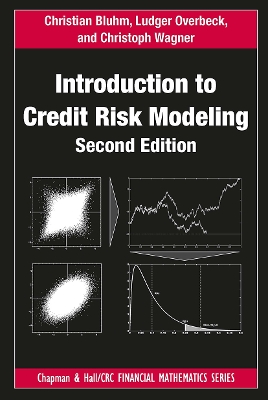Chapman & Hall/CRC Financial Mathematics
4 total works
Introduction to Credit Risk Modeling
by Christian Bluhm, Ludger Overbeck, and Christoph Wagner
Introduction to Credit Risk Modeling, Second Edition
by Christian Bluhm, Ludger Overbeck, and Christoph Wagner
Probability and Stochastic Processes with Applications in Credit Risk
by Christian Bluhm
Ideal for a one-semester course on mathematical probability, with examples and applications from credit risk, this self-contained text provides an introduction to the probabilistic concepts underlying the best practice credit risk models as they are used in banks today. Each chapter first presents the theory of the topic to give readers a solid background. The second part of each chapter provides applications to credit risk. The author provides mathematical proofs for all theorems and propositions. He covers such topics as random measures, probability distributions, limit theorems, stochastic simulation, Markov chains, and Brownian motion.

